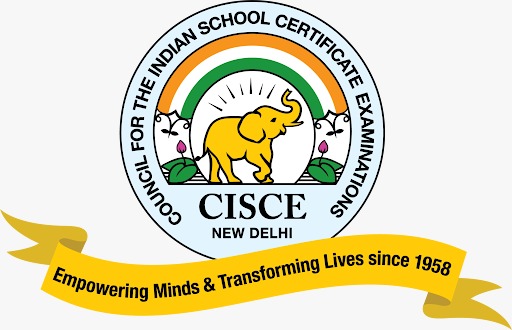Writing formal letters is a crucial skill for school students as it not only conveys a message but also presents it in a professional and respectful manner; whether you’re applying for school leave, submitting a complaint, or making a formal request, mastering the art of formal letter writing—and understanding the proper Email Writing Format for digital communications—will help you communicate effectively in various situations, a skill highly valued by many of the best international schools that emphasize preparedness for both traditional and electronic correspondence, making this guide essential as it breaks down the key components and steps involved in writing a formal letter with tips and examples tailored for school students.
What is a Formal Letter?
A formal letter is a letter written in a professional and structured manner, typically used for communication with people or organizations that you don’t have a personal relationship with. It’s often used in academic, business, or official contexts. Unlike informal letters, which are casual and personal, formal letters follow strict guidelines and maintain a polite, respectful tone. For school students, understanding the importance of formal letter writing can help in situations like communicating with school authorities, applying for internships, or addressing concerns to external organizations.
Key Components of a Formal Letter
A formal letter has several essential components that must be followed to ensure its professionalism and clarity. These components include:
Sender’s Address: This includes the full address of the person writing the letter. This information typically appears at the top right corner.
Date: The date when the letter is written is important as it provides a timeline for the communication.
Recipient’s Address: The address of the person or organization you are writing to is placed below the sender’s address, on the left-hand side of the page.
Subject Line: A brief statement indicating the purpose of the letter. It should be clear and to the point.
Salutation: This is the greeting at the start of the letter. Common salutations include “Dear Sir/Madam,” or “To Whom It May Concern.”
Body of the Letter: This is the main content of the letter, where the message is conveyed. It should be clear, concise, and respectful.
Closing: A formal closing such as “Yours sincerely,” or “Yours faithfully,” depending on the level of familiarity with the recipient.
Signature: Your name and signature, ensuring the letter is authenticated.
Letter Writing Format
The format of a formal letter can vary slightly depending on the region or specific requirements. However, two primary formats are commonly used: block style and semi-block style.
Block Style:
In block style, all the elements of the letter (sender’s address, recipient’s address, salutation, body, closing, etc.) are aligned to the left margin. There are no indents for paragraphs, making this format straightforward and easy to follow.
Semi-block Style:
In semi-block style, similar to block style, all components are aligned to the left, but the paragraphs are indented. The signature and closing are also aligned to the right. This style is slightly more traditional and formal.
It’s essential to choose the style that aligns with the requirements of your school or the recipient. Both formats are widely accepted, and the main thing is to ensure the letter is neat and well-structured.
Steps to Write a Formal Letter
Writing a formal letter may seem challenging at first, but breaking it down into manageable steps can make the process easier. Here’s a simple guide to help you:
Start with the Sender’s Address: At the top of your letter, on the right-hand side, include your address (name, street, city, and postal code). This information helps the recipient know who the letter is coming from.
Add the Date: Below your address, write the date on which the letter is being written. Use the full date (e.g., 17th February 2025) to avoid any confusion.
Include the Recipient’s Address: On the left side of the page, write the recipient’s full name, designation (if applicable), and address. Ensure that you spell the recipient’s name correctly to show respect.
Write the Subject Line: The subject line should clearly indicate the reason for writing the letter. Keep it concise, such as “Request for Leave” or “Complaint Regarding Facilities.”
Use a Proper Salutation: Begin the letter with a greeting. If you know the person’s name, you can use “Dear Mr. / Ms. [Last Name].” If you don’t know the name, “Dear Sir/Madam” is a formal and polite option.
Body of the Letter:
The body is the core of your letter, and it’s essential to present your thoughts in a structured way. Begin by introducing yourself briefly, if necessary. Follow with the purpose of the letter and any supporting details. Keep the tone respectful and avoid any emotional language. Use paragraphs to break up your points, and make sure each paragraph flows logically to the next.
End with a Closing and Signature:
Conclude the letter by thanking the recipient for their time or consideration. Use formal closings like “Yours sincerely” or “Yours faithfully,” followed by your full name. If submitting a printed version, leave space to sign your name.
Tips for Writing an Effective Formal Letter
When writing a formal letter, students should keep the following tips in mind to ensure their communication is effective:
Be Clear and Concise: Keep the message simple and to the point. Avoid unnecessary details or complex language that could confuse the recipient.
Maintain a Respectful Tone: Even if you’re writing to express a concern or complaint, ensure that your tone is polite and respectful. Avoid aggressive or confrontational language.
Use Proper Grammar and Punctuation: Correct grammar and punctuation are critical in formal letter writing. Errors can make the letter seem unprofessional and undermine its effectiveness.
Be Specific: Provide enough details to support your message but avoid unnecessary tangents. Make sure the recipient can understand the purpose of the letter without having to guess.
Common Types of Formal Letters
Formal letters can serve various purposes. Some common types of formal letters that school students may encounter include:
Application Letters: Used for applying for leave, permission, or even to request admission to a school or course.
Complaint Letters: Used to express dissatisfaction or concerns about a particular issue.
Request Letters: These are written to request something, such as a book from the library or permission to organize an event.
Recommendation Letters: Written by teachers or mentors to recommend a student for a scholarship, college admission, or a job.
Example of a Formal Letter
Here’s an example of a formal letter that a school student might write to request leave from school:
Sender’s Address
123, ABC Street
City, XYZ, 12345
Date: 17th February 2025
Recipient’s Address
The Principal
XYZ School
City, XYZ, 12345
Subject: Request for Sick Leave
Dear Sir/Madam,
I hope this letter finds you in good health. I am writing to inform you that I am suffering from a severe cold and will not be able to attend school for the next three days. I kindly request you to grant me leave from 18th February 2025 to 20th February 2025.
I will ensure to catch up on the lessons missed during my absence and will provide any necessary medical documents if required. I hope for your understanding and approval.
Thank you for your time and consideration.
Yours sincerely,
[Signature]
[Your Name]
Conclusion
Formal letter writing is a vital skill for school students, enabling them to communicate effectively and professionally. By following the correct format and incorporating the essential components, you can master the art of writing formal letters. Whether you’re applying for leave, making a request, or communicating with your school or a business, formal letters help you present your ideas clearly and respectfully. Practice writing different types of formal letters to strengthen your writing skills and ensure success in future communications.
FAQs
Include your address, date, recipient’s address, subject line, salutation, body, closing, and signature.
Start with a formal greeting like “Dear Sir/Madam” and end with a closing such as “Yours sincerely” or “Yours faithfully,” followed by your signature.
No, avoid informal language. Use clear, respectful, and professional language throughout.
Examples include leave application letters, complaint letters, request letters, and recommendation request letters.
Follow the proper format, use clear and concise language, maintain a respectful tone, and proofread for errors.






